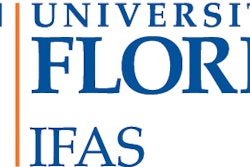There seems to be new pro-packaging life in the public policy debate, both here and in the UK.
Old-timers like me remember the 1990’s, when environmental laws focused a great deal of attention on packaging waste, largely because the focus was on municipal solid waste, and packaging represented something like 1⁄3 of such waste. So state and local governments started to require packaging itself to be reduced, reused, recycled, or recyclable.
In the process, the many advantages of modern packaging were largely ignored or forgotten, and too many people only perceived it as very visible trash. That unfair and inaccurate perception made it easier to impose heavy burdens on packaging makers, users, or the articles themselves.
Packaging protects, preserves, communicates, enhances safety, provides convenience, and is integral to marketing, often all at the same time. Strip out the marketing considerations and packaging is still crucial to swift, efficient and safe delivery of food and other consumer commodities, so much so that in parts of the world, a lack of effective packaging is often associated with lack of available foods.
Nowadays, the focus of much environmental energy is “sustainability,” usually defined so as to sound like a meld of concerns we used to call conservation, life-cycle analysis, and social consciousness. Sustainable packaging is a central goal of many companies.
AMERIPEN (American Institute for Packaging and the Environment), formed in 2010, wants to “proactively influence public and policy issues related to packaging and the environment,” says vice president Gail Tavill.
In doing so, they want to emphasize the total value chain and focus on scientific facts and data. As a result, they have made one of their top priorities “increasing the understanding and communicating the value of packaging.”
History from the 1990’s may be repeating itself, as once again the packaging industry finds itself explaining its many values. Tavill notes, “There is a real opportunity to re-invent how we communicate the value of the improvements and advances we are making in our industry to reinforce the positives versus minimizing the negatives.”
The UK-based packaging industry group, INCPEN (The Industry Council for Packaging & the Environment) thinks its government doesn’t get it about packaging, and that may be leading to misconceptions among the public as well.
INCPEN’s director Jane Bickerstaffe agrees the current debate about packaging’s value is similar to what we saw in the 1990’s. She says it’s very similar, but “the politicians are increasingly saying they need to ‘do something about packaging’ because the public think packaging is a major environmental issue. Our response is that government should explain to the public that packaging has a net positive environmental impact, instead of pandering to public misperceptions.”
Packaging’s roles in minimizing food waste are especially poorly understood, she notes, but there are others. After all, people don’t often appreciate the fact that, without packaging, consumers could have no access at all to liquids, powders, or gels. Also, she says, “Fresh fruit and vegetables need packaging to get from the field to a retail outlet, where they can be sold ‘loose,’ but those that are packaged tend to last longer so are less likely to go to waste before they are consumed.” She adds, “It also carries instructions to guide consumers on how to best use the products.”
Bickerstaffe thinks the recent emphasis on “sustainability” too often ends up shedding a bad light on packaging. “I think supply chain companies appreciate that packaging is just one of the cogs in the supply chain and their main focus needs to be on reducing the environmental burden on getting goods to people. Sometimes that can be achieved by using less packaging, but sometimes more is needed. The focus on packaging has sometimes been a diversion from the main aim.”
AMERIPEN’s Tavill says, “By continually making claims related to reducing packaging, we reinforce the notion that packaging is bad. We do this even though we know that we truly deliver a real benefit to maintaining a sustainable society by protecting the environmental and social value of products and delivering them safely to their intended use.”
So even though governments and the public still don’t properly appreciate packaging, it’s good to see the industry again advancing active advocacy on both sides of the Atlantic. PW


























